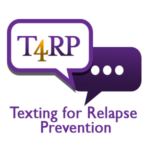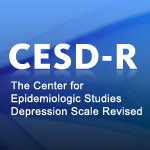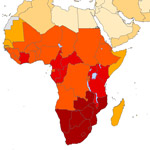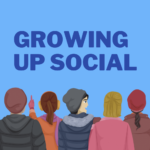Projects
Girl2Girl
An estimated one in four teen women will become pregnant by the time she is 20 years of age. And though rates of teenage pregnancy in the U.S. have largely been on the decline for the last 25 years, they are still significantly higher than those of other industrialized nations. High teen birth rates are not limited to one region or state, but exist throughout the United States. As such, evidence-based teen pregnancy prevention (TPP) programs that can be dispatched on a wide scale are urgently needed. To address this need, we’ve endeavored to develop and rigorously evaluate Girl2Girl, a TPP program designed for teen women ages 14-18 years, nationwide. This program will be delivered in the format that is closest and most familiar to teen women: texting. Text-messaging is cost-effective and will allow for speaking directly to diverse female youth across the country. Girl2Girl RCT Phone Sc …
Texting 4 Relapse Prevention
The Texting for Relapse Prevention (T4RP) is an innovative service delivery program delivered via text messaging designed for people over 18 years of age who have schizophrenia / schizoaffective disorder (SAD).
In This Together
Despite early advances, HIV has been on the rise in Uganda, making it a persistent public health problem. Since 2005, when HIV prevalence was at its lowest, the percentage of people living with HIV in Uganda has risen from 6.4% to 7.3%. This translates into 1.4 million people living in Uganda with HIV. The HIV prevalence increases for both men and women as the age into their older adolescents. Alarmingly, recent data suggests that for woman, the HIV prevalence triples from 1.6% to 5.1% over a two-year period – as they age from 15-17 to 18-19 years of age. Clearly, curbing the HIV epidemic in Uganda requires access to culturally salient and theoretically-driven HIV prevention programming for adolescents as they age through this period of risk. To that end, we are currently developing, In This Together (ITG), the first-of-its-kind comprehensive HIV prevention program for Ugandan adolescent …
BullyDown
BullyDown is the first-ever text messaging-based bullying prevention program for middle school-aged children across the United States. The 7.5 week program is intended to be delivered as a “booster” that can be delivered to middle school students at any school to enhance the programming that they are receiving and to reinforce the most important maxims of anti-bullying programming. The program was iteratively developed with feedback from youth, including focus groups and a Content Advisory Team. To date, we have conducted a pilot test with middle school youth in the Chicago-area. Guided by the social-emotional learning (SEL) framework, program text messages discuss a variety of topics including anger, empathy, perspective-taking, respect for diversity, attitudes supportive of aggression, coping, intentions to intervene to help others, communication, and problem-solving skills. This proje …
Guy2Guy
Adolescent men who have sex with men (AMSM) are facing increasing incidence of HIV and account for almost 70% of new HIV diagnoses among young people in the US, with most transmission occurring through condomless sex. At the same time, the majority of prevention programs focus primarily on adults. The majority of program that are tailored to youth are heterosexual focused. To fill this gap, we developed Guy2Guy (G2G), a text messaging-based HIV prevention program tailored to the unique needs of adolescent men 14-18 years of age across the US. Content was developed iteratively, including focus groups, a Content Advisory Team, and a beta test. The program is comprised of six weeks of text messaging content guided by the Information-Motivation-Behavior (IMB) model. Topics include: HIV transmission and prevention information, social norms about HIV prevention and attitudes toward condom use, …
Growing Up With Media
The Growing up with Media survey includes 1586 households of children between the ages of 10 and 15 years old. The aim of the survey is to examine how media may be affecting the behavior of young people.
CESD-R
The Center for Epidemiologic Studies Depression Scale Revised Everyone occasionally feels blue or sad, but these feelings usually go away within a few hours or a couple of days. When people have a depressive disorder, they feel really sad for a long time and cannot shake this feeling. They also often have problems with sleeping, trouble with appetite, feel tired a lot of the time, and have problems concentrating. Depressive disorder interferes with their ability to do things in their lives that they normally can do well; and it causes pain for both the people with the disorder and those who care about them. Depressive disorder is a common but serious illness. Many people never seek treatment for their depression, but most people who experience depression feel better if they get treatment. The CESD-R is a freely available screening test for depression and depressive disorder. It was d …
Healthy Relationships East Africa
HIV/AIDS is a major contributor to morbidity and mortality in eastern Africa. For example, in Uganda, an estimated 7.3% adults HIV positive. Men who have sex with men (MSM) bear a particularly high disease burden. Despite this increased risk, there is a considerable dearth of scientific literature documenting the barriers and facilitators to behavior change in this vulnerable population. We need to better understand the HIV risk and protective behaviors of MSM and other sexual minority men in Uganda, if we are to develop effective prevention programming. The almost complete lack of research examining the HIV risk of sexual minority women and transgender people is also problematic. Despite assumptions that sexual minority women are not at risk for HIV, compelling seroprevalence and HIV risk behavior data suggest otherwise. Of the handful of studies that have been published on African tran …
Cybersenga
HIV and AIDS continue to be a public health problem, and this is particularly true in sub-Saharan Africa. Concurrently, there has been an explosion in technology use. Taking advantage of this increased access, we developed and tested an online, evidence-based HIV prevention program designed for adolescents in Uganda called CyberSenga. In Uganda, the Senga is the father’s sister typically responsible for offering female children advice and guidance—including sexual health advice—to youth as they transition from childhood to adulthood. The Kojja is the male equivalent. We adopted the Senga and Kojja concepts to present a culturally salient, trustworthy role model for the youth to follow throughout the intervention. The CyberSenga program provides information about HIV, shows young people useful ways to solve problems and communicate with others about their needs, and shows young people …
Stop My Smoking (SMS USA)
Even though smoking-related diseases are the single most preventable cause of death in the United States, effective smoking cessation programs that are targeted to young adults are lacking. Stop My Smoking (SMS USA) is a text messaging-based smoking cessation program developed for young adults in the United States. The 6-week program is associated with increased rates of quitting at 4-weeks. The program was developed and tested in partnership with colleagues at Michigan State University and the University Of Texas School of Public Health at Houston.
Relationships in the Digital World
As greater numbers of Americans use social and other networked technologies, they increasingly use these tools to create and maintain their personal and intimate relationships. These technologies can play both positive and negative roles in personal relationships. Stalking and digital domestic abuse are two aspects of negative experiences online. For example, stalking is a disturbingly common experience. A recent national study of 16,500 adults in the United States found that one in six women and one in 19 men have been stalked to the point of creating fear. A better understanding of how dating abuse is perpetrated and experienced through technology, particularly across age groups, is critical to future prevention efforts. In collaboration with Amanda Lenhart and the Data & Society Research Institute, we will conduct a nationally representative landline and mobile phone survey of 3,0 …
SMS Turkey (Cebiniz Birakin Diyor)
Smoking represents a huge public health burden in Turkey: An estimated 51-63% of Turkish men and 24-26% of Turkish women 15 years of age and older smoke. Evidence-based smoking cessation programs are becoming more common in Turkey, but more work needs to be done. We developed and tested the first text messaging-based smoking cessation program in the Middle East. SMS Turkey (or Cebiniz Birakin Diyor in Turkish) was tested among adult smokers in Ankara, Turkey, and was associated with increased quitting rates for women and light smokers especially. This program was conducted in partnership with colleagues at Hacettepe University.
Teen Health and Technology
Because of contextual factors such as prejudice and social isolation, lesbian, gay, bisexual, and transgender (LGBT) youth consistently report victimization rates higher than heterosexual youth. It is possible that LGBT youth may similarly face increased risk for victimization online. Alternatively, because the Internet equalizes the playing field by allowing people to communicate and find social support that may be lacking in face-to-face relationships, the Internet may represent a positive influence in the lives of LGBT youth. Using an innovative online data collection strategy that enabled us to over-recruit LGBT youth as part of a larger sample of young Internet users, the Teen Health and Technology study examined the potential risk and protective factors that Internet use poses to adolescent health. Findings have applied implications for adolescent health research by identifying pos …
Cape Town Adolescent Health Survey
HIV/AIDS is a major contributor to morbidity and mortality in South Africa, where an estimated one in five adults are HIV positive. Young people bear a particularly high disease burden: 34% of new cases of HIV occur among those 15-24 years of age. Moreover, it is estimated that if the current HIV infection rates remain stable in South Africa, 50% of 15-year-olds alive today will die from AIDS. The impact that HIV is having on South African adolescents cannot be overstated. Several researchers have recently noted that adolescent-focused interventions in South Africa are not having an impact as effective as desired. Certainly, interventions that are low-cost, scalable, and modifiable to reflect changing behavioral trends, such as the Internet and text messaging, should be considered as additional tools to add to the arsenal of available HIV prevention programs. We conducted a survey i …
CyberBully411
Harassment and bullying on the Internet are serious adolescent health issues associated with significant personal challenge for some children. CyberBully411 provides accurate and helpful information about Internet harassment. It was the first of its kind to be designed especially for older adolescents. The site has been featured on the American Library Association’s “Dealing with Cyberbullies: Tips for Kids”. YPulse, a popular daily email update exclaims the website is “the slickest anti-bullying website I’ve seen, and packed with great info/resources”. The project was funded by the Community Technology Foundation of California.
QuarenTeen Health
The COVID-19 pandemic and related public health policies (e.g., school closures, vaccine distribution) are likely impacting the short- and long-term health behaviors of adolescents. By April 2020, the majority of the United States (US) population was living under a stay-at-home order. Since then, all states have attempted some form of reopening, often leading to surges in cases and putting restrictions back in place. Although essential to mitigate the effects of COVID-19, these necessary public health measures may be substantially affecting the lives of adolescents, including their friendships and relationships with romantic and sexual partners. Further, COVID-19 may be amplifying existing health disparities experienced by sexual and gender minority (SGM) and racial/ethnic minority populations. Prior to COVID-19, SGM and racial/ethnic minority youth faced substantial health inequities. G …
Growing up Social
COVID-19 has had a significant impact across the U.S., resulting in over 31 million cases and 559,000 deaths as of April 14, 2021. Since the beginning of the pandemic, a number of public health policies have been implemented to help reduce the spread of the virus, including social distancing, home quarantine, and school closures. With these public health policies has come a sudden and dramatic shift in our lives, and this is particularly true for adolescents who are navigating a critical and unique developmental period. As of April 2021, one in six teenagers (16.3%) have tested positive for COVID-19. Understanding the factors that confer increased risk is imperative given adolescents’ vulnerable developmental stage. The pandemic also has reified long-standing health inequities. Indeed, data overwhelmingly suggest that Black/African American and Hispanic people are significantly more like …
















